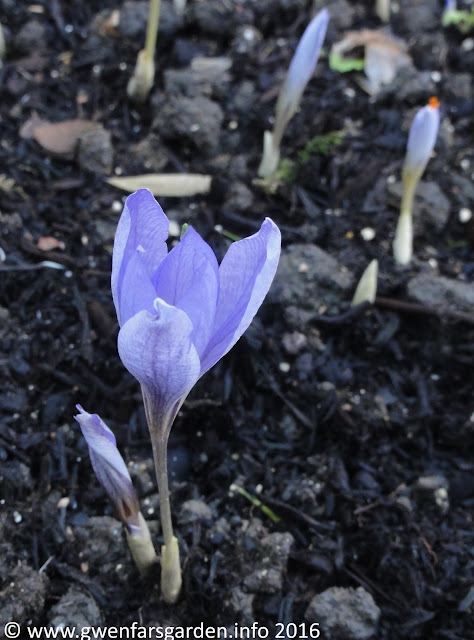Emma Cooper, author of several gardening books including
The Alternative Kitchen Garden, an A-Z and
Jade Peals and Alien Eyeballs, as well as her informative blog
The Unconventional Gardener, has just published her latest book,
The Small Harvest Notebook (volume 1).
The book is refreshing in several ways. First and foremost, it does
not assume you have acres, a walled garden, or even an allotment. In fact it's raison d'etre is that it assumes you only have a small garden, maybe even only a couple of window sills. It understands that with gardens becoming increasingly smaller, they are often required to meet several needs within a limited space. Not just a space to grow, but also a space to relax, to enjoy wildlife, and even allow room for children to play football.
This is also a very easy to read book and you don't need to read the whole thing in one go, rather you can dip into the relevant month for some inspiration. There is also a chapter on the Lost Crops of the Incas, introducing us to several new, old crops, such as Oca, Ulluco, Mashua and Yacón.
The aim of book is to encourage people to not feel the need to grow for self-sufficiency and gluts, but to eat seasonally and grow for diversity and interest. It breaks each month of the year into a season, such as January - mid Winter, February - late Winter, etc. It then discusses a crop to consider growing for that month/season, as well as offering some alternatives. It does not aim to be a comprehensive book, listing every single fruit, vegetable or herb that can be grown in each period; there are plenty of gardening books that already go into this detail. Rather, it offers a glimpse of the edible growing possibilities, and encourages you to think about what you really like and might want to grow.
So May (late Spring) focuses on sprouting Broccoli, then offers alternatives such as wok brocc, perennial broccoli and oriental broccoli. June (early Summer) highlights Beetroot, reminding us that you can eat both the leaf (like chard) and the roots, and suggests red-veined sorrel or Ulluco if you want to try something different. October (mid Autumn) discusses garlic (my favourite!) and introduced me to an alternative, Society Garlic, Tulbaghia violacea, which I now just have to try. Apparently the stems and flower heads offer a sweet, roasted garlic flavour, and it sounds like something I'd like to throw into a stir fry.
I only have a couple of minor quibbles with the book. Firstly, and maybe this is my age showing, but I thought the font could be slightly larger. It fits a lot in a 78-page book, and as Emma has self-published it, perhaps a smaller font was a way to reduce costs. If there was a way to not expensively increase the font in the next volume, well that would be grand.
The book contains chapters on 'Seed sowing basics', 'Planning a garden on a budget' and 'Small harvest techniques'. These are really helpful chapters, but for some reason they are mixed in between Late Winter and Early Spring, Late Summer and Early Autumn and Late Autumn and Early Winter respectively. I felt they would have been better included at the start of the book, to help set the scene when growing for small harvests. However, these are minor points, and in no way detract from the usefulness and inspiration that the book offers.
Who is it for? Obviously it's for those new to gardening and growing their own food. But it's also a useful book for helping experienced gardeners who want or need to downsize (me!), or whom have only grown ornamentals until now and want to explore options for adding edibles into the mix. And it also offers experienced growers an alternative perspective on what you might grow and why.
The book is a well-written and engaging introduction to growing small. It's a sampler to whet the appetite, to encourage you to sit back a think about how you can grow edibles in a small space, rather than make you feel you need to rush off to try and become self-sufficient within a year.
At the moment the book is only
available on Amazon in paperback, as there are limited options when you are self-publishing. So this meant I had to break my general Amazon boycott. But it was worth it. This is the first volume in a series, and I look forward to reading the next book.
* * * * *
Disclosure: although I 'know' Emma on Twitter and through her blog, and we have often chatted about a number of gardening topics, I purchased the book and undertook this review without her knowledge, as an interested fellow gardener.









































